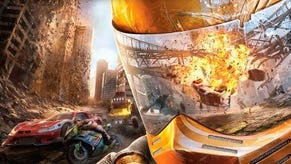The Making of MotorStorm Apocalypse
Digital Foundry talks to Evolution Studios about its most ambitious racer yet.
"The events were designed in fairly small brainstorming sessions, centred on playable blockout versions of the tracks," Nick Sadler reveals.
"We soon developed an intuition for where events would look their best. Locations were chosen based on how visible a collapse, plane-crash or road-shear might be, but also on a base-level of how disruptive an event stood to be. We couldn't really make a natural bottleneck even narrower."
Designers were given control of the timing and scheduling of events, and conditions could be attached to how they were activated in order to give a smoother, fairer gameplay experience. For example, in the single-player Festival mode, the more devastating set-pieces only trigger if the player is doing well in the race, sitting in a qualifying position.
"The technical worst-case scenario during development was a single-lap race where every event triggered and was visible while the entire pack of cars was bottlenecking around it," reveals Sadler.
"If we could make this work, in terms of gameplay and in terms of frame-rate, distributing that track's events over two, three, four, or five laps, would (technically) be more easily achieved and tuned."
The introduction and implementation of the events also caused some issues for the game's AI systems, which had to be able to adapt to drastically altered circumstances brought about by the set-pieces.
"Design-wise, significant challenges came from having to maintain the balance of all vehicle classes, as events could elongate or truncate the length of a lap, mid-race," Sadler continues.
"One particular issue was opening and closing (or narrowing) routes at the right time. Open a route too early, and AI cars would plough into structures that hadn't yet moved out of the way even with a dynamic avoidance system implemented. Conversely, if a route was closed early, AI vehicles would avoid apparently safe routes, alerting players to imminent closure. It was of utmost importance to the player-immersion that the AI could make the decision at the same time the player does."
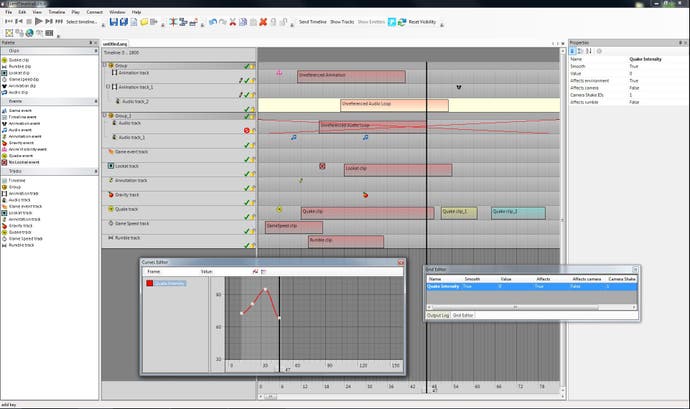
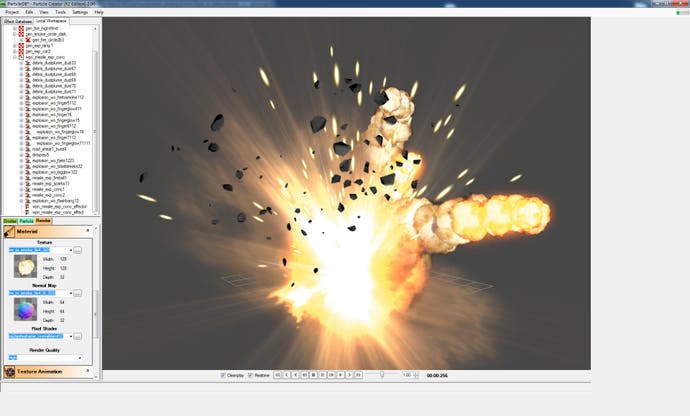
MotorStorm Apocalypse is the latest in a long line of games to utilise deferred rendering principles, an approach that typically allows developers to work with many more active light sources than traditional rendering techniques. Games like Need for Speed: Hot Pursuit, Uncharted, GTA IV and the Killzone titles are examples where the deferred approach is a key component in the game's visual look.
"MotorStorm and Pacific Rift were traditional forward renderers. Apocalypse is a semi-deferred light pre-pass renderer," confirms Oli Wright.
"We first render the normals, then we accumulate lighting into an FP16 buffer, then we do a final 'material' pass to produce the image that then goes off for post-processing."
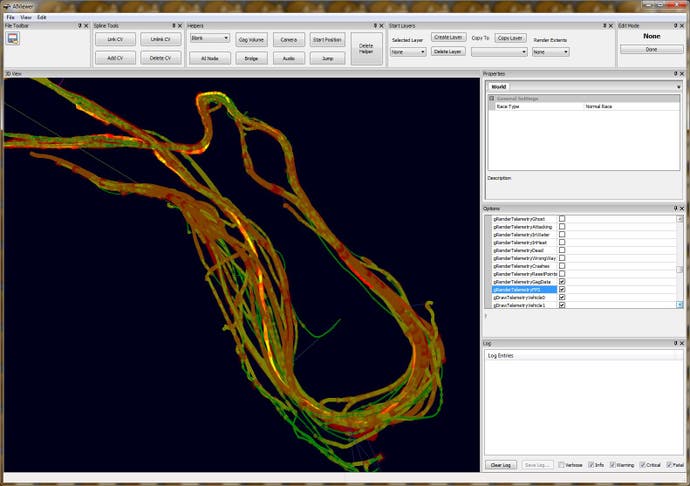
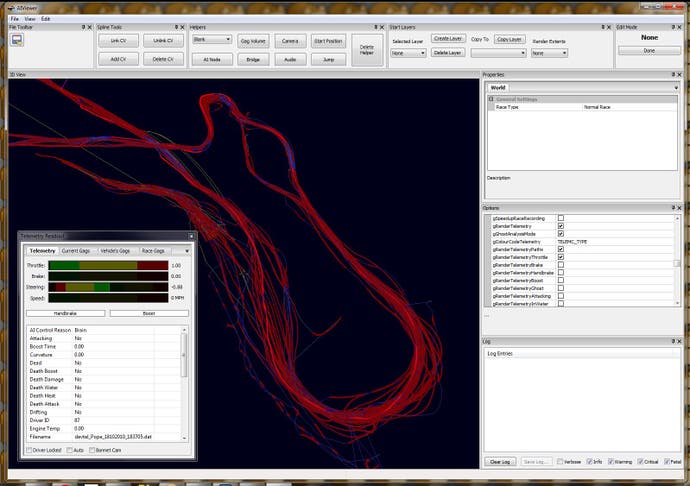
While there were levels of commonality in the code with previous MotorStorm releases, Evolution carried out a lot of work in improving the visual effects pipeline in order to accommodate the advances the team planned for the new game.
"The VFX pipeline had to deal with much larger effects than we had ever attempted before. Therefore screen fill and overdraw were to become major issues for us," explains Andy Seymour.
"We had Tech Artists and VFX Artists research and develop techniques to deal with dust clouds and explosions. We combined typical 'billboard' style particle effects with polygonal mesh based effects, and bespoke shaders with animated parameters."
"The rendering pipeline had a major overhaul in order to facilitate dynamic lighting," Wright adds.
"We also massively beefed up our particle system this time round, improving the sorting and adding ribbons for missile trails. We've always used lower-resolution buffers for our particle rendering, but this time round we added geometry aware up-sampling to virtually eliminate the haloing of particles around solid objects that you would sometimes see. Then there's SSAO too. It runs at quite a low resolution, again with geometry-aware up-sampling so hard edges are preserved."
"The more significant difference between MotorStorm Apocalypse and older VFX pipelines was in how larger volumetric effects were achieved," Nick Sadler says.
Bearing in mind the seismic nature of many of the events, Evolution needed to be able to fill the screen with dust and particles, usually rendered with computationally expensive transparent alpha effects. This presents quite a challenge for the RSX, necessitating some clever engineering.
"When larger structures collapsed, we needed to be able to drive into the resulting dust clouds without losing frame-rate," Sadler observes, explaining the challenge.
"We achieved this by having larger, animated geometry spheres with a dust/smoke shader with Z-fading at geometry intersections and a transparency fall-off based on viewing-angle. Smaller dust particles augmented the leading edge of the cloud, and faded fairly early.
"The dust-sphere gave way to a full-screen fog-pocket effect, with more easily rendered wisps which visually alluded to travelling through dense, localised fog, smoke, or dust. All transparencies were rendered in the half-res buffer, but the combination of the dust-spheres and small dust particles meant that the player could drive right up to, and into the cloud. Using large animated shapes, we could better-control the amount of over-draw and fill-rate."




